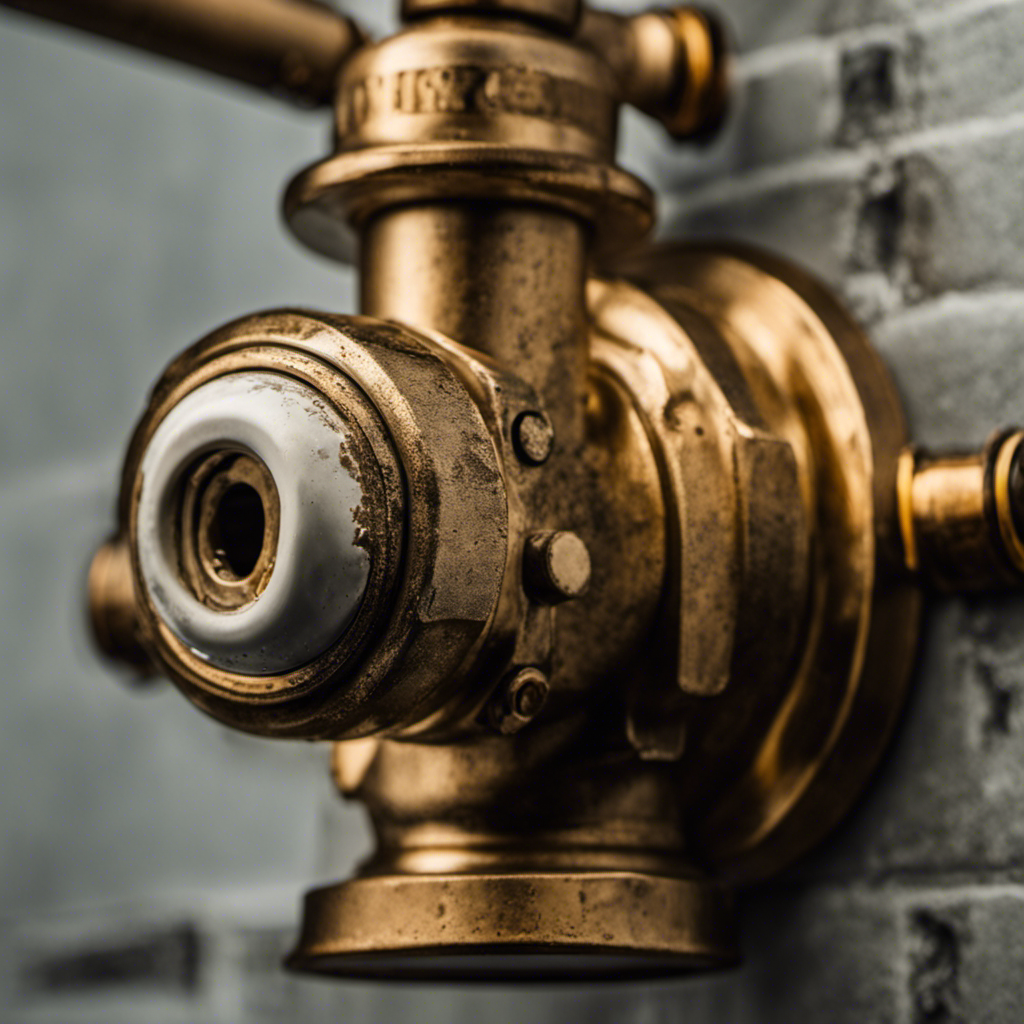Did you know that 1 in 5 households experience the frustrating issue of a toilet that won’t flush properly without adding water to the bowl? Well, fear not! We’re here to help you troubleshoot and fix this common problem.
In this article, we’ll delve into the common causes of incomplete flushing, explore issues with the toilet tank and bowl, and discuss possible blockages in the plumbing system.
Get ready to master the art of a flawless flush!
Key Takeaways
- Common causes of incomplete flushing include clogged drains, malfunctioning toilet flappers, inadequate water pressure, and blocked vent pipes.
- Issues with the toilet tank can lead to flushing problems, such as toilet tank leaks, faulty flapper valves, malfunctioning fill valves, cracked tanks, and improperly adjusted floats.
- Problems with the toilet bowl, such as clogged drain pipes, faulty fill valves, cracked bowls, improperly adjusted water levels, and mineral deposits, can also cause flushing issues.
- Blockages in the plumbing system, including clogged pipes, faulty flush valves, build-up of mineral deposits, tree root intrusion, and blocked vent pipes, can prevent proper flushing.
Common Causes of Incomplete Flushing
One common reason why our toilet doesn’t flush properly is due to a clogged drain. When the drain is clogged, water can’t flow freely, resulting in an incomplete flush.
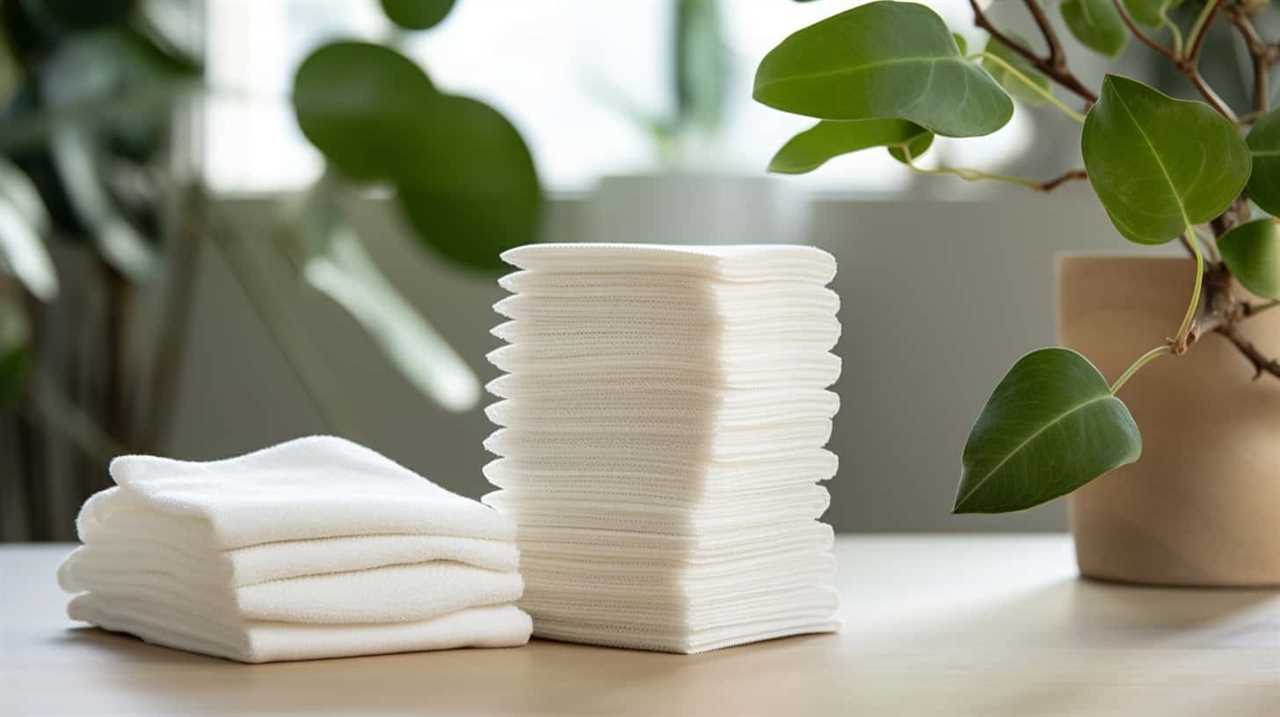
Another possible cause of incomplete flushing is a malfunctioning toilet flapper. The flapper is a rubber valve that controls the flow of water from the tank into the bowl. If the flapper is worn out or not sealing properly, it can prevent sufficient water from entering the bowl during a flush.
Additionally, inadequate water pressure can contribute to incomplete flushing. Insufficient pressure may not generate enough force to effectively push waste through the drain and out of the toilet.
Moving on to the subsequent section, let’s now explore the potential issues with the toilet tank.
Issues With the Toilet Tank
Now let’s address the problems that can arise with our toilet tank.

One common issue is toilet tank leaks, which can cause a decrease in water level and hinder proper flushing. Leaks can occur due to damaged components, such as the flapper valve or fill valve. A faulty flapper valve may not seal properly, allowing water to continuously leak from the tank into the bowl. Similarly, a malfunctioning fill valve may not shut off completely, leading to a constant flow of water into the tank.
Another problem that affects the toilet tank is refill issues. This can be caused by a malfunctioning fill valve or a restricted water supply. If the fill valve fails to open fully or the water supply is inadequate, the tank may not refill properly after flushing, resulting in insufficient water for a strong flush.
Regular inspection and maintenance of the toilet tank can help identify and resolve these issues.
Problems With the Toilet Bowl
Moving on to the toilet bowl, we encounter potential issues that can affect its proper functioning. One common problem is a clogged drain, which can lead to a toilet bowl that won’t flush properly. A clog in the drain pipe can prevent water from flowing out of the bowl and cause it to back up. This can result in a low water level in the bowl, making it difficult for the toilet to flush properly.
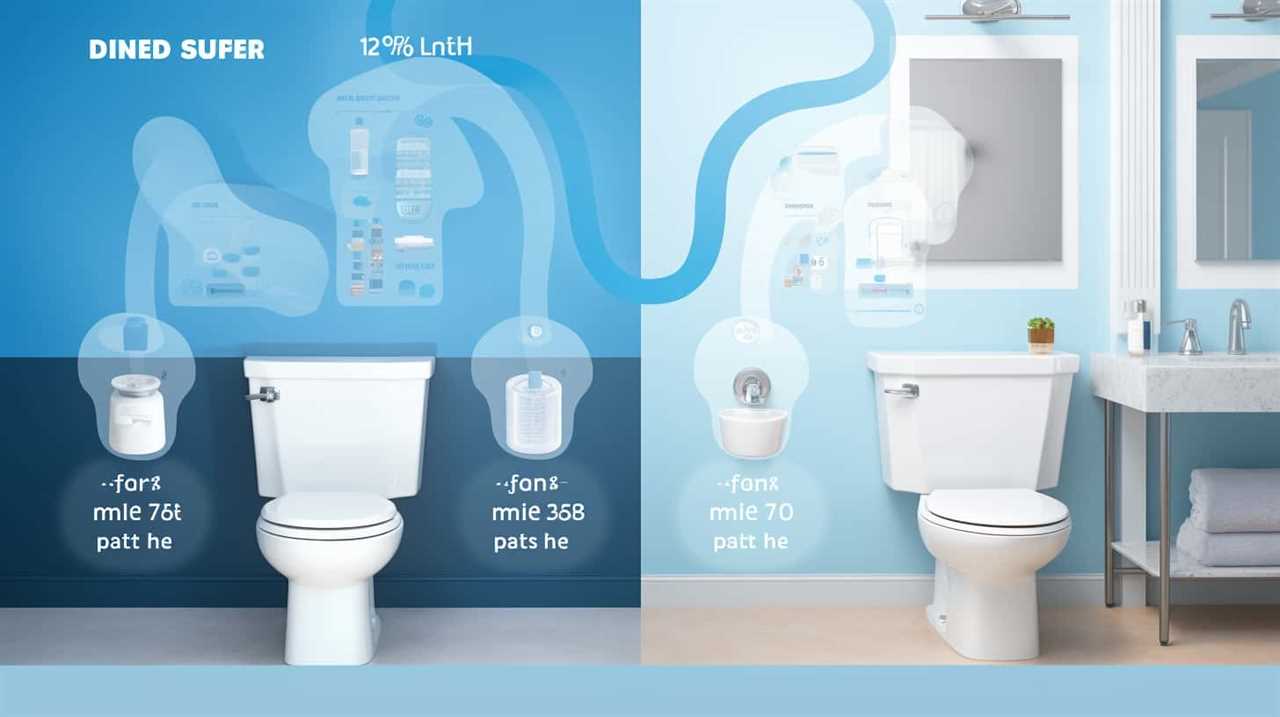
Another issue that can affect the toilet bowl’s water level is a faulty fill valve. If the fill valve isn’t functioning correctly, it may not add enough water to the bowl after each flush, leading to a weak flush or a bowl that doesn’t empty completely.
To ensure proper toilet bowl functioning, it’s essential to address any clogs or fill valve problems promptly.
Blockages in the Plumbing System
Toilet bowl flush issues may be caused by blockages in the plumbing system. When the pipes become clogged or the flush valve malfunctions, it can prevent the toilet from flushing properly. Here are four possible reasons for blockages in the plumbing system:
- Clogged pipes: Over time, debris such as toilet paper, hair, or foreign objects can accumulate in the pipes, obstructing the flow of water and preventing a proper flush.
- Faulty flush valve: The flush valve is responsible for releasing water from the tank into the bowl during a flush. If the valve is worn out or damaged, it may not open fully, resulting in a weak or incomplete flush.
- Build-up of mineral deposits: Hard water can lead to the accumulation of mineral deposits in the pipes, restricting the flow of water and causing flushing problems.
- Tree root intrusion: In some cases, tree roots can infiltrate the plumbing system and grow into the pipes, causing blockages and disrupting the flushing process.
Identifying and resolving these blockages in the plumbing system can help restore the proper functioning of your toilet flush.
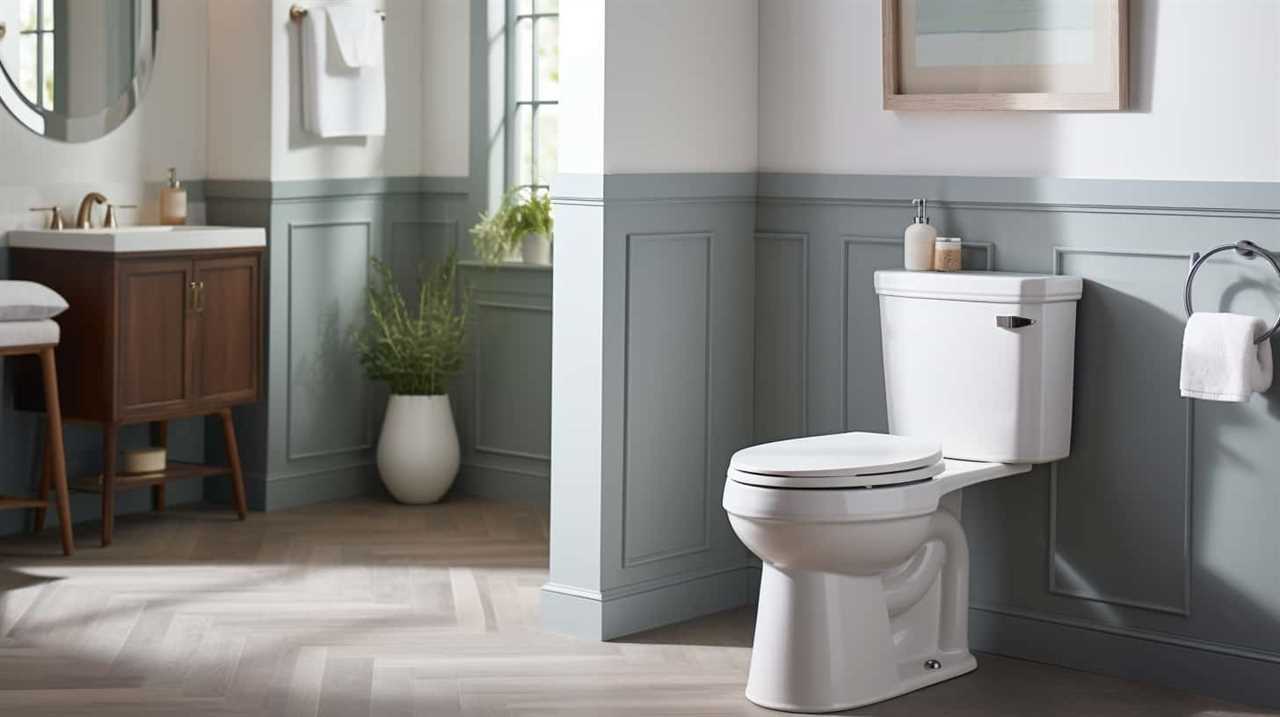
Steps to Troubleshoot and Fix the Problem
To address these blockages in the plumbing system, we can take a few steps to troubleshoot and fix the problem.
The first step is to check the water level in the toilet tank. If it’s too low, adjust the float to increase the water level. This can be done by turning the adjustment screw or bending the float arm.
If the water level is fine, the next step is to inspect the flapper valve. Over time, the flapper valve can deteriorate or become misaligned, causing a weak flush. To fix this, replace the flapper valve with a new one. Ensure that the new flapper valve is compatible with your toilet model.
Frequently Asked Questions
How Can I Prevent Blockages in the Plumbing System?
Proper toilet maintenance and regular plumbing inspections are essential to prevent blockages in the plumbing system. By taking these preventive measures, we can ensure the smooth flushing of toilets without the need to add water to the bowl.

What Are Some Signs of a Faulty Toilet Tank?
When it comes to toilet tank maintenance, it is important to be aware of signs of a faulty tank. Leaking is a common issue that can disrupt flushing. Regular inspection and prompt repairs are essential for proper functioning.
Can a Problem With the Toilet Bowl Affect the Flushing Mechanism?
Yes, a clogged or cracked toilet bowl can cause flushing issues. These problems can disrupt the proper flow of water, preventing an effective flush. It is important to address these issues promptly for optimal flushing performance.
Are There Any Common Causes of Incomplete Flushing That Are Not Mentioned in the Article?
There can be various common causes of incomplete flushing, such as inadequate toilet bowl water levels or a malfunctioning flapper valve. These issues can prevent the proper flow of water, resulting in an incomplete flush.
What Should I Do if the Troubleshooting Steps Provided Do Not Fix the Problem?
If the troubleshooting steps provided do not fix the problem, we may need to consider alternative solutions. One option is to call a professional plumber who can diagnose and resolve the issue.
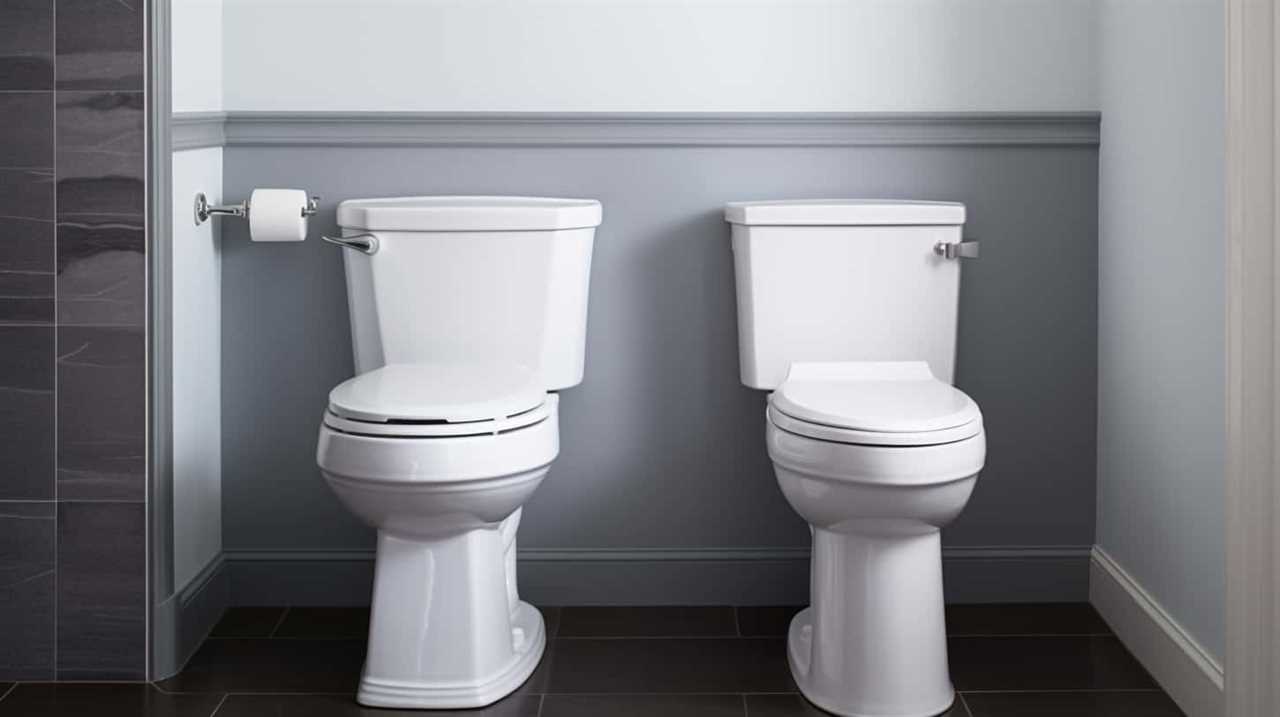
Conclusion
In conclusion, when faced with a toilet that won’t flush without adding water to the bowl, it’s crucial to identify the root cause.
Whether it’s issues with the toilet tank, problems in the toilet bowl, or blockages in the plumbing system, troubleshooting and fixing the problem is essential.
Just like a skilled plumber unclogs pipes to restore the flow, addressing these issues will ensure a smooth and effortless flush, leaving you with a fully functional toilet.



